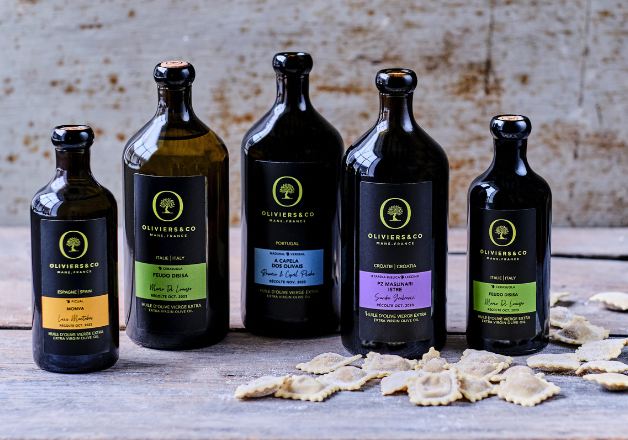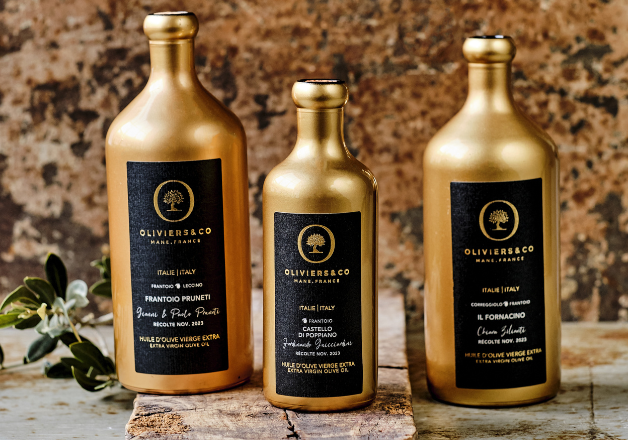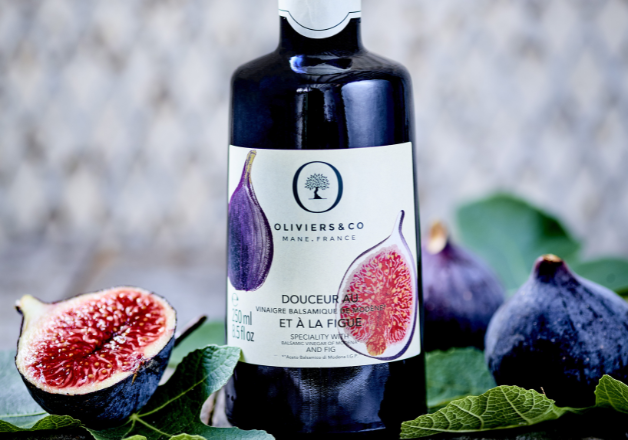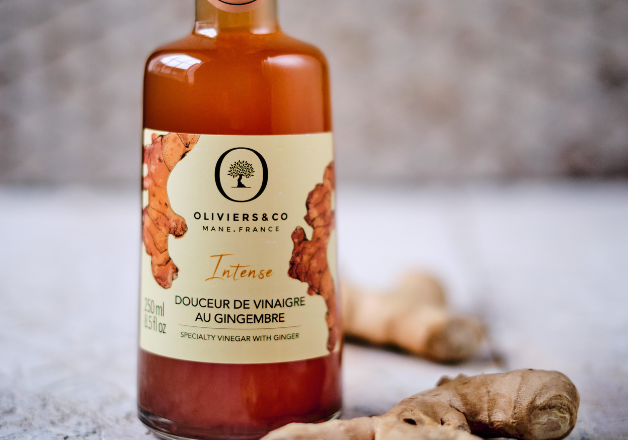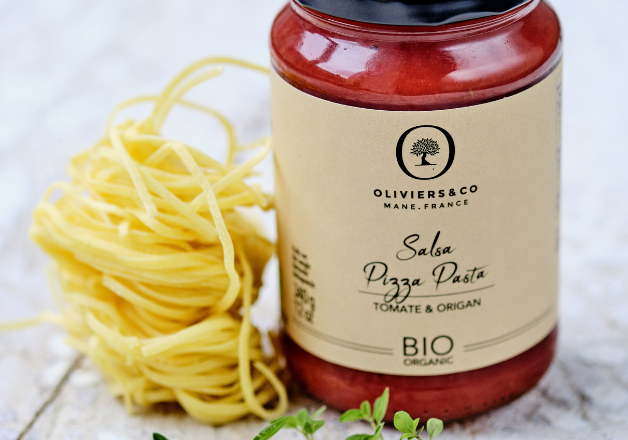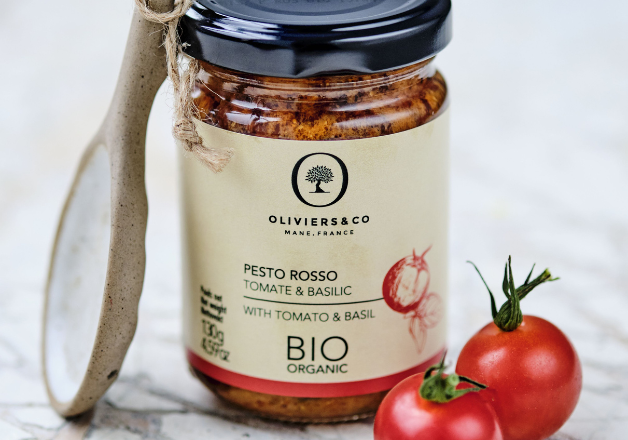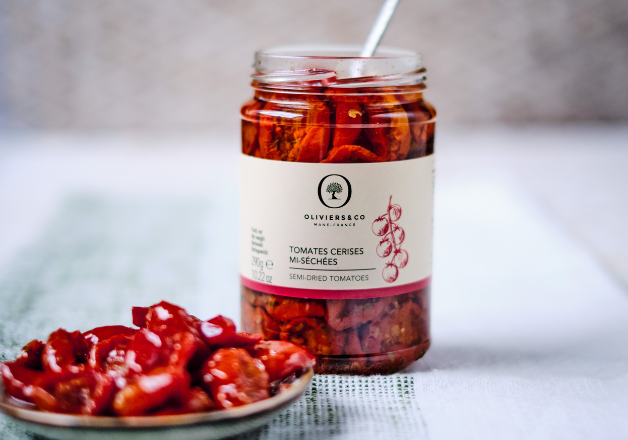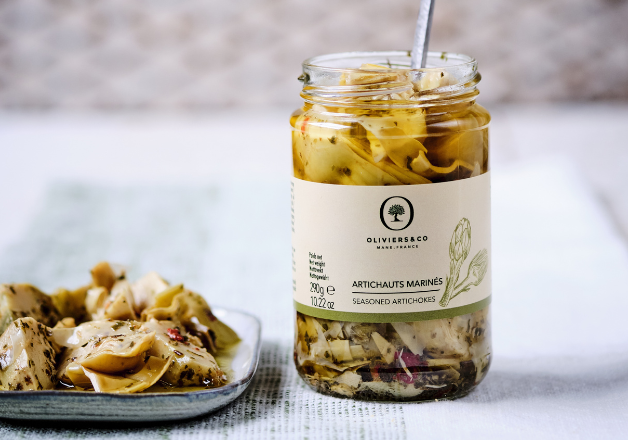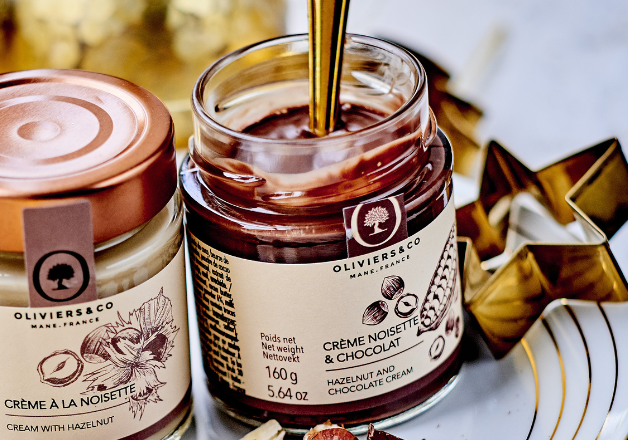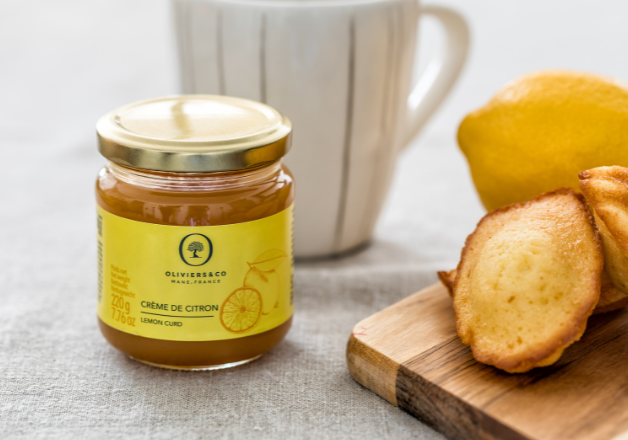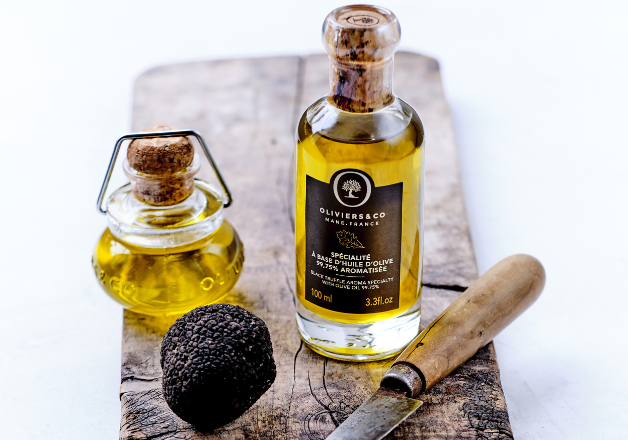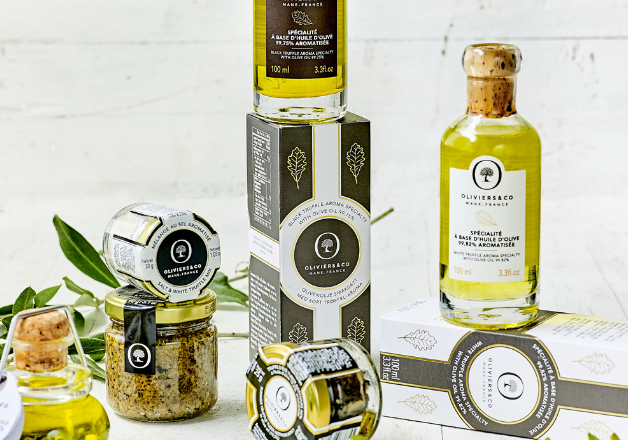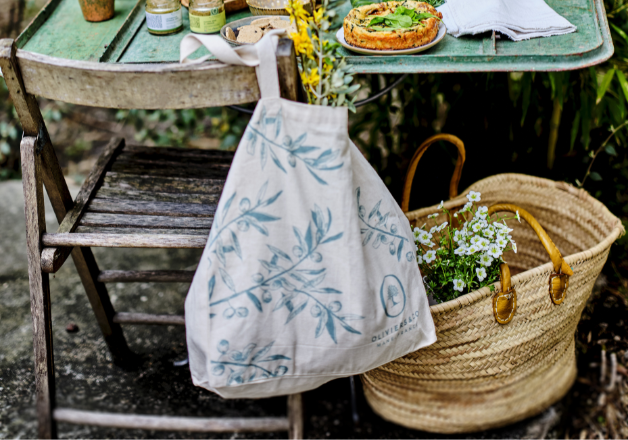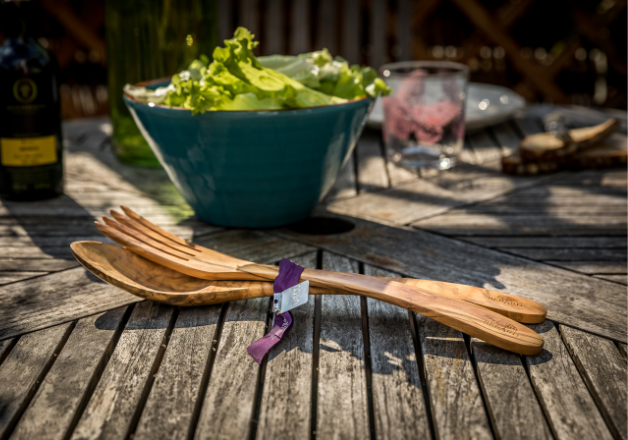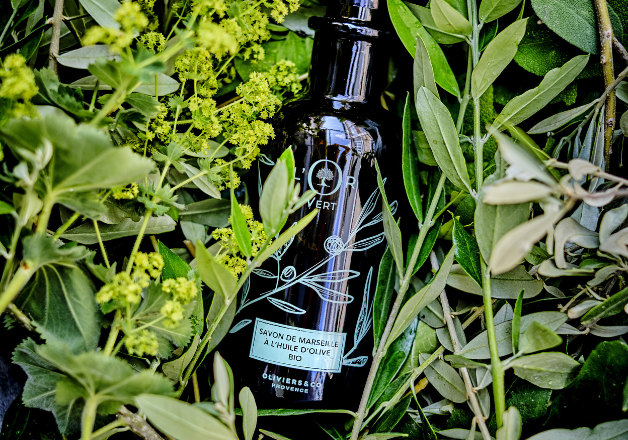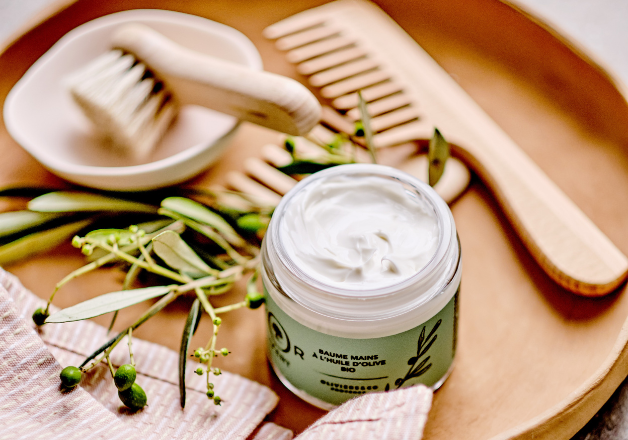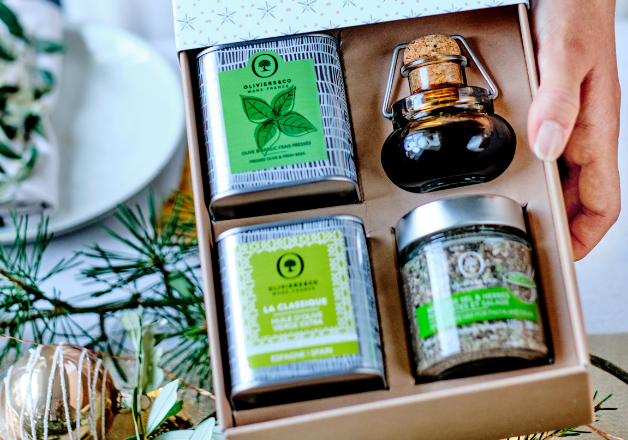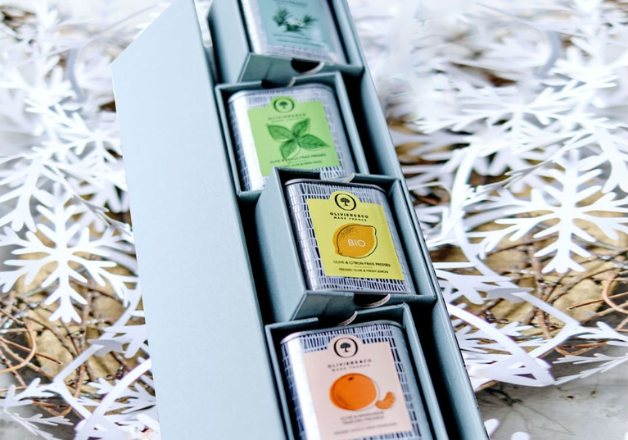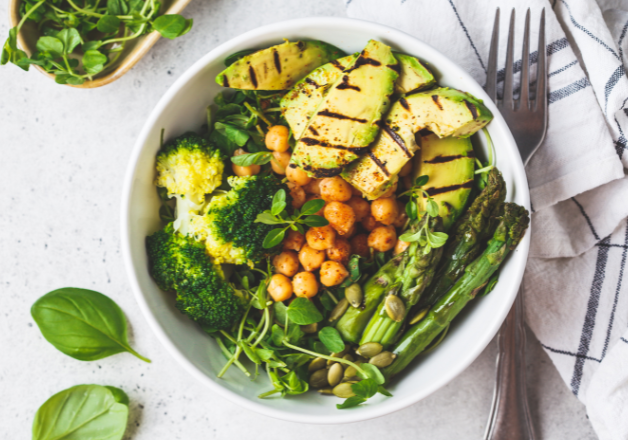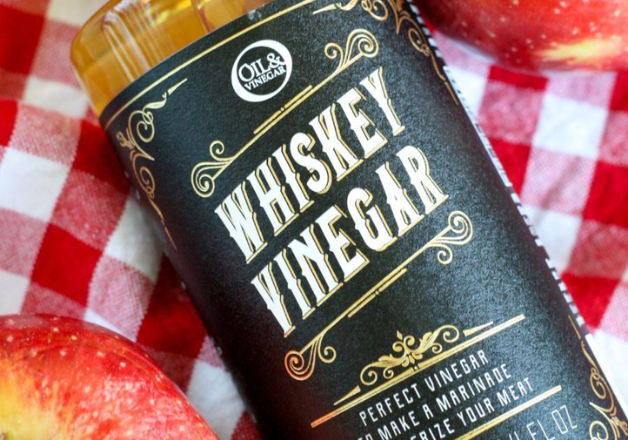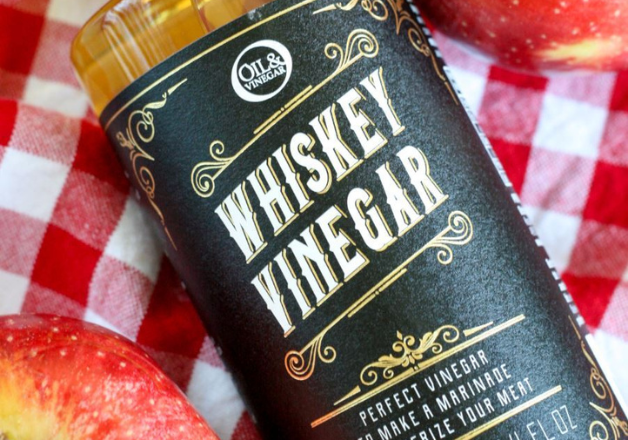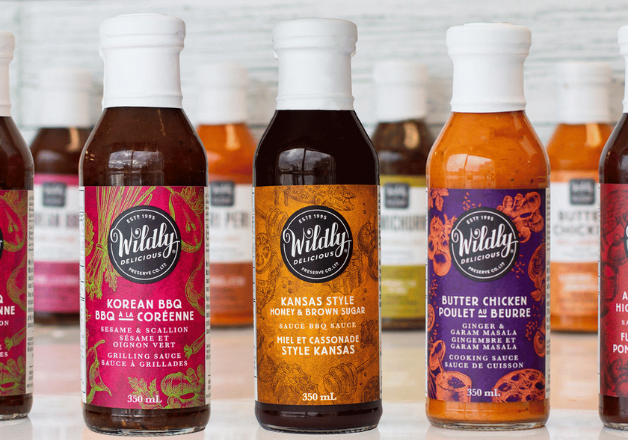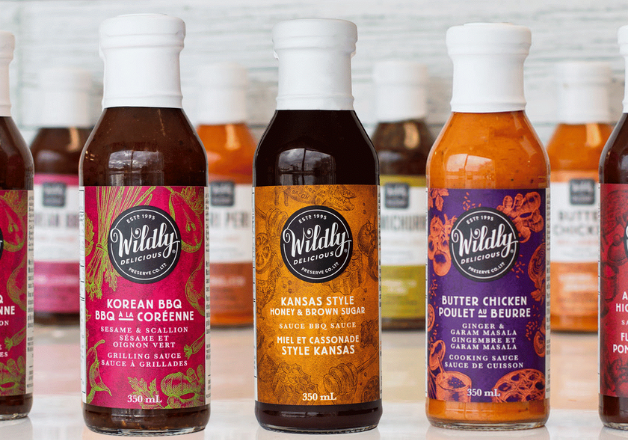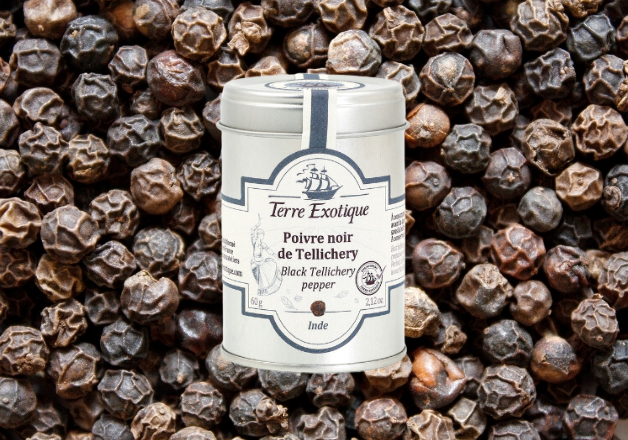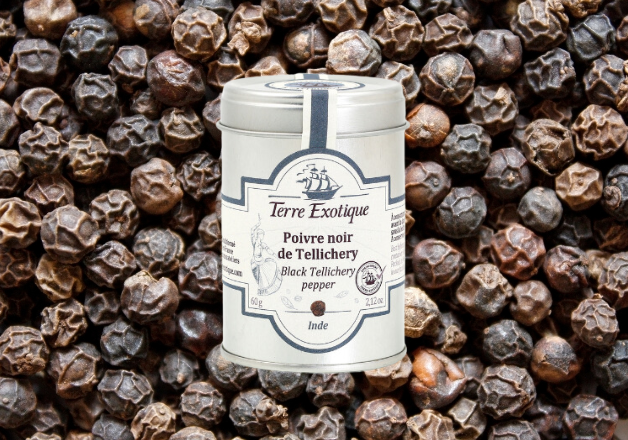At Oliviers&Co, we use a variety of terms, referecences and technical process, You may find it useful to know wether filtered or unfiltered oils are best, waht exactly a cold pressed olive oil means and how it affects the taste and quality of the oil.
A
- Acidity: calculated in % of oleic acid, acidity is used to measure the quality level of an oil and to determine its category. It is never perceived by an acid taste and is measured in the laboratory. Acidity levelforExtra Virgin Olive Oil is less than 0.8%. Oliviers&Co's Olive Oils have less than0.4% acidity. Acidity is a requirement for wether an oil is considered extra virgin or not.
- AOC : Appellation d'Origine Contrôlée is an official French government label identifying a product whose production stages are carried out in the same geographical area and according to a recognized know-how. The AOC certificate assures that the olives are grown in France and the olive oil is produced in France, respecting criteria, such as density of plantation, harvesting methods, size minimums, and preparation without the use of chemicals or artificial preservatives. The producer must assure that no olive oil from other areas is added. In order to obtain the certificate of approval, every plot is subject to analyses and tastings before production.
- Aroma: is the perception of fragrances in the mouth through the nose. In the aroma of different oils, we can find hints that remind us of different fruits such as almonds, apples, citrus fruits, plants such as figs and tomatoes, as well as green hints that remind us of leaves and freshly cut grass.
- Astringency: is a property of some extra virgin olive oils, the hallmark of Polyphenols. It is a positive attribute in sensory analysis, a tactile sensation, a sign of freshness and of a young olive oil.
B
- Best Before Date: these dates indicate the time during which the product tastes its absolute best. Products are still perfectly safe for consumption when these dates have passed and if you ever have a question regarding whether one of our products would still be considered fresh and consumable.
- Bitterness: this is the only taste that olive oil can have, and its intensity is determined by tasting. In the mouth, the bitterness is mainly perceived on the back of the tongue.
C
- Climate: the type of soil and climate where olive trees are grown will affect a variety of the crop’s characteristics, including the size of each olive and the richness of the oil that it produces. As olive harvests occur in the winter, frost and capricious temperatures can damage crops, causing minimal oil production from each olive. Additionally, rocky soil prevents trees from absorbing water, which limits oil production. The soil and the type of climate will significantly influence the aromatic potential of the future oil.
- Cold-Pressed: in the history of olive oil, two pressings were generally executed to create one full batch; the first at room temperature (‘the best quality’), and the second at a warmer temperature, with the addition of hot water (an ‘inferior quality’). This old screw press only managed to extract about 40% of oil from the olive paste. Once powerful hydraulic presses were introduced, only a single pressing was necessary. Today, 90% of olive oil is extracted during the first pressing. Many people are still looking for 'first cold pressed' as an inscription of quality, however, we believe the information that appears on Oliviers&Co tins and bottles, such as the best by date, harvest month, olive varieties and country of origin are much more accurate in representing an olive oil’s quality.
- Condiment: a product based on vinegar and grape must, more or less concentrated, intended for seasoning. Their acidity level is lower than that of a wine vinegar. Discover the whole collection.
- Cooking oil: whether you are sautéing, frying or just adding some heat, use our Everyday olive oil.
E
- Everyday Olive Oil: our Everyday oils follow the same Oliviers&Co guidelines as our Grands Crus, but at a price designed for daily use.
- Extra virgin olive oil: Extra" is the highest grade for olive oil - the best you can buy. must be extracted from olives only by mechanical means and without excessive heat (>27°C). It has an oleic acidity of less than 0.8% and is free of defects. It is the best quality of olive oil. Extra virgin olive oils are not processed or refined. They are not chemically altered in any way. It is essentially 'freshly squeezed' from the fruit of the olive tree, without alteration of the color, taste, and nutrients or vitamins. Because of the integrity of the product, and its antioxidant components, olive oil will keep longer than other vegetable oils.
F
- Filtered: the most noticeable difference between an unfiltered and a filtered extra virgin olive oil is appearance. In an unfiltered oil, you may notice some sediment (the remaining olive fruit particles) settled on the bottom of the bottle. Don’t be alarmed! This will not affect the taste or quality of the oil. Although the majority of Oliviers&Co oils tend to be filtered, over the years we've selected some truly remarkable unfiltered oils as well. Ultimately, the decision to filter an oil or not is a preference of the producer.
- Finishing Oil: add salt, pepper and this type of olive oil as your third condiment for a final touch to any recipe.
- Flavour: quality perceived by the organ of taste. (Sweet, salty, bitter, acid, pungent...). Extra virgin olives offer a wide variety of intensity in the exclusively bitter category This term is specific for olive oil. It is a tactile sensation of spiciness, like that of chilli or other spices.
- Floral (ripe fruit equivalent in the competition): the olives are harvested at physiological maturity. A rounder and softer taste, a silky and velvety texture.
- Ripe Fruit: The olives are macerated in open-topped paloxes (large crates) to obtain a fermentation that will give aromas of cocoa and mushrooms. Acidity level higher than 2%, a category not selected by Oliviers&Co because they are not extra virgin.
G
- Grassy: olives are harvested green or turning (shade of purple) at the beginning of the season, i.e. at aromatic and not physiological maturity. These olives give the most fragrant oils. It is called "fruité végétal" because the taste is very vegetal, with herbaceous and fiery aromas. (tingling in the back of the throat). It is in these oils that the most aromatic compounds are measured.
- Grands crus: extra virgin olive oil selected according to precise production specifications and drastic selection criteria. (About ten technical control points and 22 identity control points for our oils). Our extra virgin olive oils are high quality products that offer an infinite range of aromas and flavours. We offer total transparency on their traceability.
H
- Health Benefits: extra virgin olive oil lowers “bad” cholesterol in the system and cleans the arteries and helps to prevent strokes and heart attacks. Nutritionally, olive oil contains more mono-unsaturated fat than any of the popular vegetable oils: over 70% of olive oil is composed of mono-unsaturated fatty acids, which is a good fat that lowers the level of bad cholesterol only. Virgin olive oils also contain the antioxidants beta-carotene and Vitamin E. A tablespoon of olive oil contains 120 calories, 14 grams of fat, and no cholesterol.
M
- Maturity: stage of development of the fruit on the tree. (White skin -> then green -> purple -> black).
O
- Olives: all olives start out green and turn to black or dark purple. When the olive is green, they are very tasty but do not have that much oil. When the olive is black, the tastes are less intense and they are very oily. A lot of people think that the colors represent two different types of olives but they do not. Because black, fully-ripe olives contain more oil than green ones, it is cheaper for a grower to concentrate on black olives because they produce a higher yield of oil. Part of what makes Oliviers&Co unique is our demand placed on our growers that they harvest the olives as early as possible…green, young, and still full of flavor. This is more expensive for the grower, but ensures a high quality product.
- Olivade: olives harvesting.
- Olive oil: juice extracted from the olive.
- Olive varieties : There are nearly 2000 varieties of olive trees listed in the world, with nearly 400 varieties in France, of which a hundred are cultivated by professional olive growers for the production of table olives or oil.
- Orchard: area of land devoted to the cultivation of fruit trees, called fruit growing. Discover the stages of the harvest
- Organic farming: a method of agricultural production that does not use any chemicals.
- Organoleptic: perception of a sense: nose = smell, mouth = taste...
- Oxidation: Oxidation is caused by prolonged contact with oxygen, air and light. Rancid is the attribute used to qualify an olive oil that has been oxidized. This flavor is unpleasant and irreversible. Proper storage can prevent this. As soon as you open the bottle or tin: make sure you keep your oil away from sources of heat like your stove. You do not have to refrigerate your olive oil, just use it often and enjoy!
P
- PDO: Protected Designation of Origin is the name in French of a European Community identification sign. (= AOC but for European products). PDO products must be produced, processed and prepared in a specific region using traditional production methods. The raw materials must also be from the defined area whose name the product bears. The quality or characteristics of the product must be essentially or exclusively to its place or origin, i.e., climate, the nature of the soil and local know-how.
- Polyphenols: natural compounds present in plants in varying densities, particularly in fruit and vegetables. Polyphenols have antioxidant properties, which are good for health. (Polyphenols = Tannin for wine).
R
- Rameaux d'Or: our Rameaux d’Or assortment features Grand Cru oils produced from exceptional groves located exclusively in Tuscany. The gold bottle is symbolic of these rare olive oil gems, which we liken to the finest Bordeaux.
- Rancid: reminiscent of the smell of linseed oil. This defect comes from an oil that is too old or from a problem of conservation / oxidation.
- Reserved Harvest: enjoy a journey to Italy, France and Greece with our signature Collection. Showcased in tins designed to exemplify the heritage of each respective olive oil producing region, you’ll find here Grand Cru olive oils at a price designed for daily use.
T
- Terroir: natural region with a collective knowledge of production, soils and terrain, climatic homogeneity. Those will affect the taste of agricultural products. Terroir can very loosely be translated as "a sense of place," discernible in the flavor of its food, which is embodied in certain characteristic qualities, the sum of the effects that the local environment has had on the production of the product.
- Traceability: As a guideline, Oliviers & co enforces strict controls whereby all products are tracked from harvesting to bottling. We know the olive trees and producers from where each bottle originates. On each Oliviers & co label, consumers can read the exact origin of the vintage, including the producer, the varietals of olives used, the total quantity available, and, of course, the harvest date. There is also a systematic control of all products in the laboratory of Eric Verdier, Olivier & Co.’s creative director and quality manager.
- Types of oils: there are 4 types of oil that, apart from their gustatory qualities, can only be distinguished from one another using physical/chemical indicators such as their levels of peroxide and oleic acid. These types are extra virgin olive oil, virgin olive oil, olive oil containing a mixture of refined and virgin olive oil, and pomace oil. At Oliviers&Co we select only extra virgin olive oils. After its superior taste is verified, the oil's acidity level (not to exceed 0.8%) and quantity of oleic acid must be checked; its peroxide indicator must also be as low as possible.
V
- Varietals: more than 100 types of olives are used worldwide to produce olive oil, each one possessing unique characteristics. Some olives are particularly suited to the production of oil, others make better table olives (ex: Lucques) and others are good for both (ex: Cailletier and Nocellara del Belice). Many olive oils are a mix of several varieties of olives and the result will change according to the proportion used. The varietals of olives used are fundamental for the final quality of the oil. Overall, a superior olive oil is made thanks to the producer's expertise of the different olive varieties. The grower’s main goal is to achieve a full aromatic maturity instead of a physical one. If the strengths and weaknesses of the varietals are known, the best mix and percentage of each olive can be determined. The result will be an olive oil with no defect and a richness in taste and quality.
- Vintage: year of harvest.
- Virgin olive oil: must be extracted from olives only by mechanical means and without excessive heat (>27°C). Its oleic acidity level is between 0.8% and 2%.

